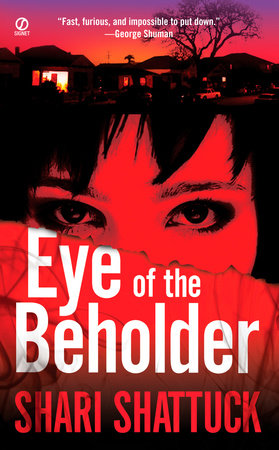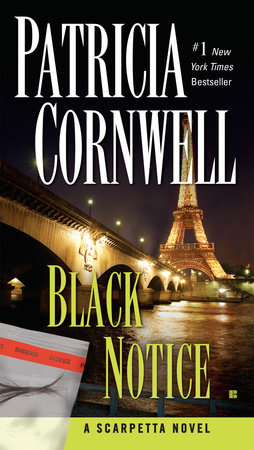Author Q&A
Essays by Kay Hooper, Author of the Shadows Thrillogy
On Stealing Shadows
Stealing Shadows was born, I think, out of what has been a lifelong interest in two areas: mysteries and the paranormal.
I always did love mysteries and suspense, reading the classics like Agatha Christie and Dorothy L. Sayers when I was younger and virtually everything I could get my hands on in the years since. I love them all, from the gentle, virtually bloodless "cozies" to the really dark and edgy suspense/thrillers dominating today’s bestseller lists.
As for the paranormal, I vividly remember rushing home from school in order to watch eerie episodes of the groundbreaking daytime soap Dark Shadows. I remember reading book after book on subjects such as reincarnation, telepathy, psychic healing, telekinesis, and precognition.
As with my other reading in those years, I had nothing in mind beyond exploring my varied interests. It never occurred to me then that one day I would actually use the bits and pieces of information, fact and speculation, stored deep in my brain.
But that absorbed knowledge, like so much else of my teenage years, floated to the surface eventually. And found its way into my writing, at first in small characteristics and elements and later in much more important ones. A heroine hiding from the world because of her gift; a "haunted" Southern mansion; a couple whose romance was merely the latest chapter in an eternal love story.
It was fun to use those paranormal elements within the framework of a romance. But, gradually, as my work progressed into single-title, I discovered that the ideas simmering in the back of my mind were taking on a darker, edgier form.
Ever one to follow my nose, I paid attention to those ideas—and Cassie Neill immediately stepped center-stage. A gifted, wounded psychic, bound by her abilities and her conscience to help others even at the risk of her own life—and sanity. With Cassie came the title Stealing Shadows, and I knew I had the beginning of something that would require more than one novel.
Because there were other characters also demanding their own stories, some misty and vague because it wasn’t quite their time to take center-stage; others fully-formed and rather arrogantly insistent that they wanted in now. Characters like Noah Bishop, FBI profiler and so much more, whose story I saw and understood almost instantly and with startling clarity; Bishop ended up anchoring my trilogy, appearing in all three novels and taking center stage for his own story only in Book 3.
What I had, I realized, was fodder for more than one story—perhaps much more. So I decided to begin with three stories, a trilogy that would be connected only by the paranormal elements—and Bishop. Each book could and would stand alone, but the complete trilogy would tell a bigger story and would, I hoped, lay the groundwork for future stories.
Plans don’t always work out as we hope, as the poet said, but in this case the finished trilogy actually exceeded my hopes and expectations. I liked the characters, liked how the plots worked themselves out (I never know in advance how a story will develop, being a seat-of-the-pants writer who never outlines) and thoroughly enjoyed the experience of turning these ideas into novels.
Even more, this trilogy did indeed lay the groundwork for future stories. And all that information I stored in my brain years ago, facts and speculations about the paranormal, is combining itself beautifully with my love of mystery and suspense—and the always fascinating dynamics of the relationships between men and women.
I never knew, watching Dark Shadows as an enthralled kid, that one day I’d create my own "mythology," my own world of the paranormal.
And I never would have guessed how much fun I’d have doing it.
On Hiding in the Shadows
Hiding in the Shadows, unlike most of my other novels, was born, literally, in a single moment of inspiration, with a "what if" idea that gave me the backbone of the entire story. It’s more usual for me to have several "moments," several different ideas, in character and plot, which jell eventually into a story.
I can count on the fingers of one hand the number of times in my twenty-year career when I saw the central premise of a story in a single blinding moment before I ever wrote a word of it. It’s such a rare occurrence, one of the magical "possibilities" that keep me writing because, when it happens, it makes working a pure joy—at least for that wonderful moment.
In Hiding in the Shadows I had that moment, and the idea fit in well with the paranormal theme behind my "Thrillogy." It would be different from Stealing Shadows in several ways: it would take place in the large city of Atlanta rather than a small town; the paranormal elements would be less obvious; and the developing relationship between hero and heroine would be much more . . . conflicted.
Bishop, of course, had to take part, and I found out quickly that he was the hero’s best friend, and that his FBI expertise would be necessary to the story. We find out a few more things about Bishop, including the fact that he’s putting together a new unit within the FBI, leading a team of agents whose abilities are very, very specialized.
An early review of Hiding in the Shadows made a comment about "smoke and mirrors," and I think that reviewer was right on. Nothing in the story is quite what you think it is—-including several of the characters.
In the course of writing the story I was able to build a bit more of my psychic mythology, and that was not only fun but proved to me that I had at least a few more stories to tell that fit well within that world. Other characters began to take shape in my mind, their lives and conflicts coming into focus.
If the theme of Stealing Shadows was fighting monsters, especially those inside our own minds, the theme of Hiding in the Shadows is probably a much simpler one. Connections. We are so connected to the other people in our lives, to our past—and to our future. We exist within a complex pattern of threads, wrapped safely and securely in a fabric woven of our experiences and our interactions with those around us.
So what if you woke up one day to find that the fabric had torn almost beyond repair while you slept? That all those connections making up your life and experiences had been severed, the memories stolen from you? What if even your name and the face you saw in the mirror were unfamiliar to you? What would you do?
For Faith Parker, the answer is a single certainty in the darkness surrounding her, a lone memory of a face. A man. But is it her memory she experiences with such vivid, emotional certainty? And is Kane MacGregor a man she once loved, a man she can trust?
Or was even more than her very identity stolen from Faith while she slept?
Smoke and mirrors. Look at your reflection carefully.
Who do you see—really?
































